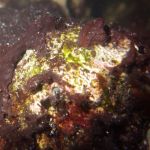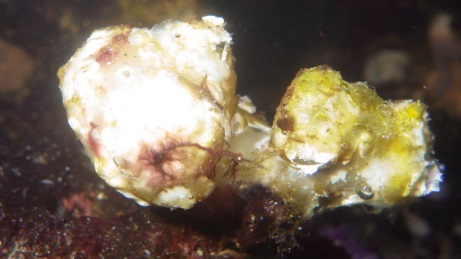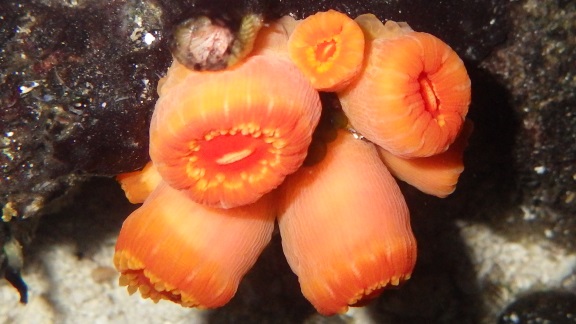It seems that power blackouts in Toronto are just way too common. There seems to be a really big one every ten years or so (in 2003 because of the hot weather, and in 2013 because of the ice storm) with some smaller ones in between. One would think that in one of the richest counties on Earth people can manage to keep the lights on, but apparently that is too much to expect.
I was travelling overseas during the power blackouts and I have been posting archive pictures of critters from my reef tank. When I came back to Toronto I saw that some of my fears have been realized, and while my freshwater aquarium has survived the about two day period without power, my reef tank has suffered a major die off.
Unfortunately the computer UPS that is used as a backup — to have at least one power head running in my reef tank during a power failure — is not adequate to keep things running for days, and I can’t quite operate a gas powered generator inside a condo apartment. So even if I wasn’t away during the power blackout I would have been mostly helpless to save the inhabitants of my reef tank.
By the time I got back from vacation most of my corals and all my marine fish were gone. Most have vanished completely, a few still had their decomposing corpses poisoning the water. Rocks were covered with some horrible reddish-brown slimy thing.
It also means that the concern in a recent post was irrelevant by the time I have raised it. All my camel shrimp are dead, and the beautiful Duncan coral was just a rotting piece of organic matter when I have found it.
The devastation is great, I have even lost some animals that I had for over ten years. 🙁
Interestingly even most of the pest Aiptasia anemones seem to have vanished, even though it seems to be nearly impossible to kill them intentionally.
But some creatures did survive. The first ones were of course the hardy bristle worms.

Some bristle worms have survived the power blackout but even the Ricordea Yuma got bleached.
A number of snails have survived, the Nassarius snails, most of the Conches, and most of the Cerith snales are still alive. The Turbo and Astrea snails are, on the other hand, all dead.
From the delicate cnidaria in the tank I still have various mushroom anemones, although most of them are gone, and a half of the Ricordia yuma that are still alive have bleached almost completely.
Surprisingly the expensive and delicate Dendrophyllia coral seems to be still alive, although the polyps don’t want to open.
I have also found a Cerianthus anemone alive that was lost behind some rocks months ago.
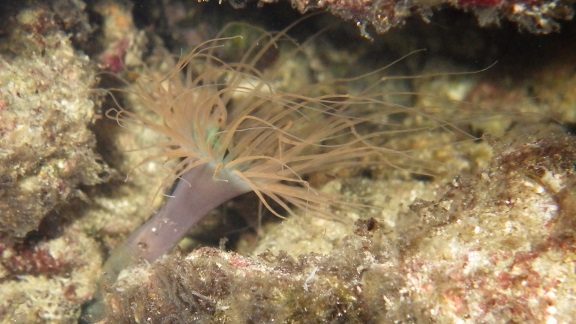
A Cerianthus tube anemone still living and looking healthy even though nearly everything has died around it in the tank during the power blackout.
Most of the crustaceans are gone, various shrimps and crabs nearly all dead, except for the hermit crabs that seem to be able to overcome almost anything.
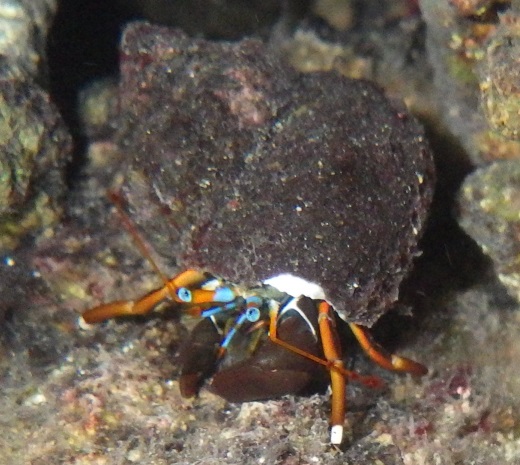
Hermit crab still alive after the power blackout. Notice that the shell is covered in some slimy stuff just like the rocks.
So my reef tank is now in ruins, but some creatures still struggle to survive or even thrive in spite of adverse conditions. And I continue to try to rebuild what was lost, even though some of the live stock took me years to acquire. Some have bits and pieces living in other people’s tanks, so even the dead ones are not all completely dead.
Currently I am performing water changes, and I am still trying to remove as much organic matter from the tank as possible. We will see what happens and how the surviving organisms recover.
Update 01/February/2014
After several water changes, the corals that are still alive are now recovering.
The Dendrophyllia has opened up and it is now eating. The Ricordea Yuma specimens that were completely bleached are regaining some green color. Even the remining button polyps started to recover although the now ubiquitous hairy green algae are trying to suffocate them.

My reef tank recovering from the damage caused by the 2013/December Toronto power blackout.
Small images, clockwise starting from the top: New live rock being added to increase biodiversity, Dendrophyllia now opens, Ricordea Yuma is regaining green color after being bleached, Button polyps are recovering while struggling with hair algae, some Aiptasias did survive and started to invade the tank again, Dendrophyllia eating.
I have added a few new snails, urchins to graze on the blooming algae, and a Kole tang for similar reasons.
A few pieces of fresh live rock were also introduced in an attempt to increase biodiversity.
I am also adding some Nitra-Guard, since the previous portion seems to have melted away.
We will see what happens in the next few weeks.
Update 10/February/2014
Dendrophyllia is looking good. The Kole tang is working out reducing the jungle of hair algae on the rocks. Now, I just need more patience.
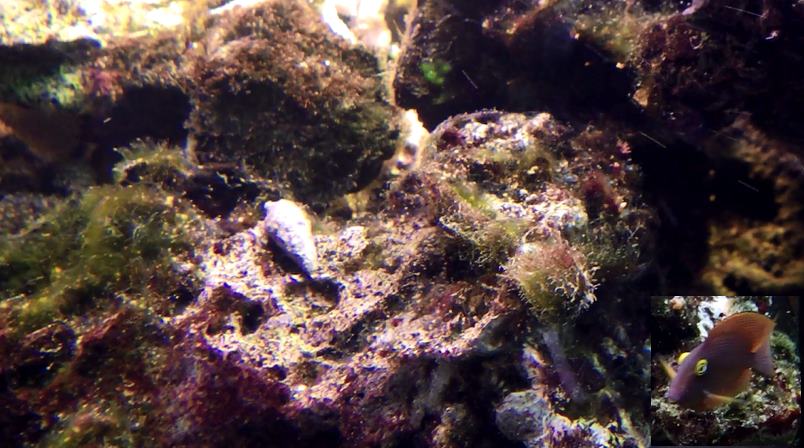
The Kole tang that I have added recently is doing a good job of reducing the hairy green algae growing on the rocks.


